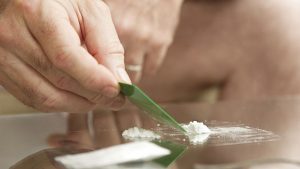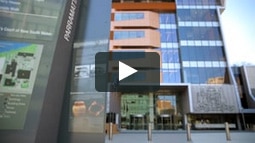Cocaine: Australia’s new drug of choice?
In the 1990s there was a heroin crisis. More recently newspaper headlines were besieged with the horrors of people addicted to crystal meth. Are these still two of the most popular drugs in Australia or is cocaine now the drug of choice for Australians?
According to the 2016 National Drug Strategy Household Survey, cocaine is now the second most used illicit drug next to Cannabis, increasing from 1 per cent of the population using cocaine within the past 12 months in 2004 to 2.5 per cent of the population in 2016. Cocaine related calls to DrugInfo, ADF’s helpline, more than doubled by mid 2017 from the previous twelve months (Source: Alcohol and Drug Foundation).
According to a Wastewater Drug Monitoring Program report released last month, use of cocaine in regional NSW has tripled since August 2016. Data released by the Bureau of Crime Statistics and Research revealed a 50 per cent increase in offences involving cocaine use and/or possession from June 2013-2015 despite the fact that the cost of cocaine in Australia is significantly higher than anywhere else in the world.
Even the Australian Rugby Union has come under scrutiny for recent cocaine related activities of some of its players. For example, both James O’Connor of the Wallabies and Karmichael Hunt of the Queensland Reds were arrested for cocaine possession, and Ali Williams who played for the All Blacks in the 2011 World Cup was charged after he was caught purchasing the drug.
There is a bright side though. Although cocaine may be used by more people than other illicit drugs like crystal meth or heroin, it is used much less frequently. For example, in 2016 the majority of people (64 per cent) used cocaine only once or twice a year compared to cannabis, which was consumed by a large portion of users (36 per cent) on a weekly basis (Source: 2016 National Drug Strategy Household Survey).
Why is cocaine use on the rise?
A 2013 report by the National Drug & Alcohol Research Centre showed that just under half of its respondents (43 per cent) said cocaine was easy to get.
Others have suggested that the rise in cocaine use may be due to minimal adverse effects on the part of the user as usage patterns are occasional and predominantly non-injecting.
A report tracking cocaine trends in Australia suggests that an increase in demand for cocaine may be due to “changes in the Australian methamphetamine and ecstasy markets.” For example, the report suggests that a decline in purity of ecstasy could be a factor in increased cocaine use.
Increase in cocaine being imported in Australia
Another possible explanation is the increase in cocaine importations. For example, a paper by Hughes et al1 (2012) highlight that in the period between “2006– 2007 the majority of cocaine seizures were commercial quantities of 2 kg or greater.” Between July and December 2017 more than 600 kg of cocaine was seized by police at our borders, according to News.com – a 50 per cent increase from last year alone.
Diversification of both embarkation and entry points of cocaine into Australia may also contribute to increased availability. Hughes et al1 point out that they found that Sydney was no longer the main port for cocaine importation as an increasing number of seizures occurred in Melbourne, Brisbane and Perth.
In 2014-15, the majority of cocaine crossed our borders by air, as 91.5 per cent of cocaine was seized through international mail routes.
Supply routes increased from 22 countries in 1999-2000 to 46 in 2008-2009, with Panama, Mexico and Columbia being major exporters1. According to The Australian Criminal Intelligence Commission (ACIC), Columbia is the prominent source for cocaine entering Australia.
The increase in embarkation points not only makes in more difficult for border officials to track importation patterns but major exporters being countries like the US (i.e. 193.4 kg), Columbia, Panama, and Mexico suggests the involvement of more professional organised crime networks.
Whatever the reason, it seems cocaine use may be on the rise. Although it may not be viewed as nefarious a drug as crystal meth, cocaine does come with its own risk factors.
References
1 Hughes, C.E., Chalmers, J., Bright, D.A., Matthew-Simmons, F. & Sindicich, N. (2012). Examining supply changes in Australia’s cocaine market. Drug and Alcohol Review. 31. Australasian Professional Society on Alcohol and other Drugs. pp. 263-272.







